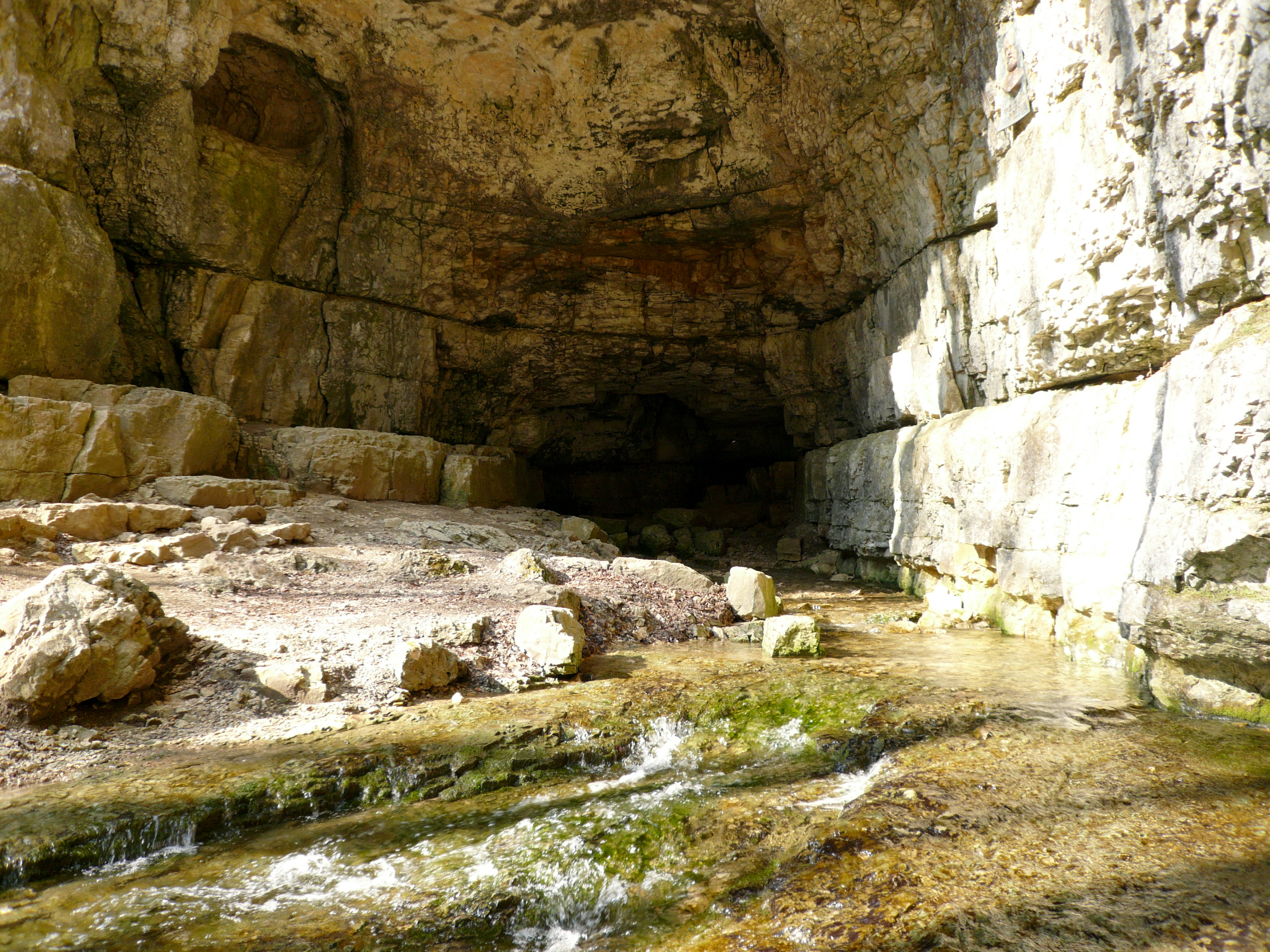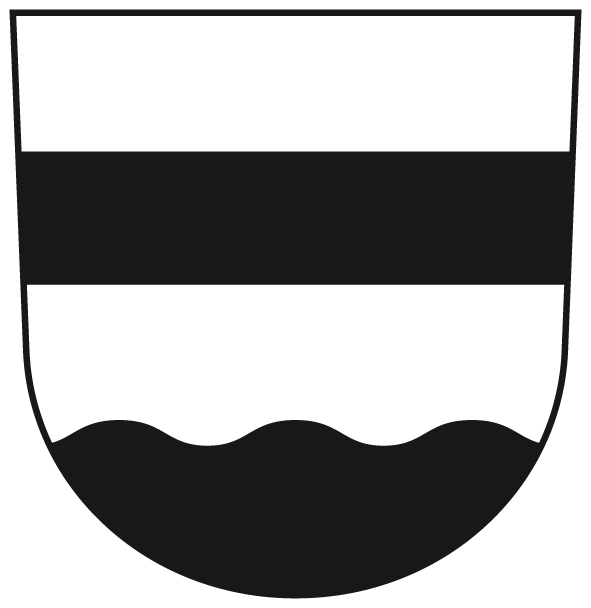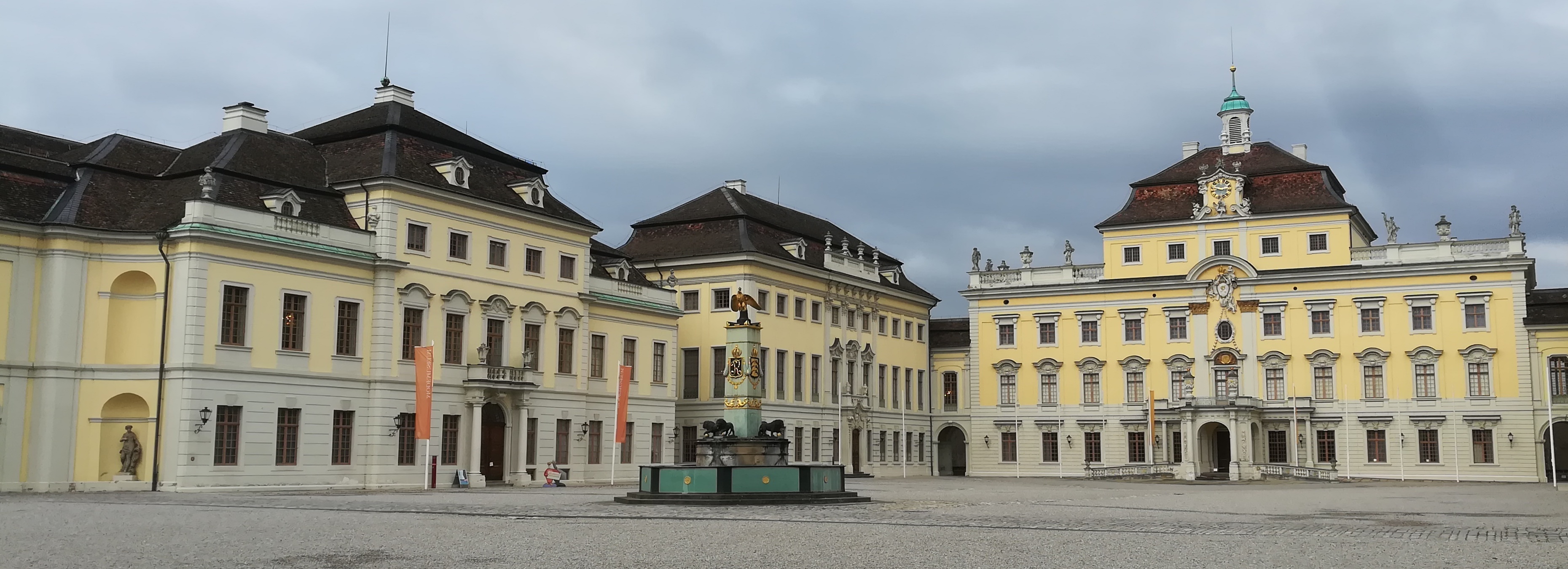|
Grabenstetten
Grabenstetten is a municipality in the district of Reutlingen in Baden-Württemberg in Germany. It lies within the area of the Celtic Heidengraben. Municipality arrangement Besides the homonymous village Grabenstetten there are no other places that belong to Grabenstetten. Neighboring communities To Grabenstetten borders the municipalities and towns Erkenbrechtsweiler ¹, Lenningen ¹, Römerstein, Bad Urach and Hülben. The list is based on the clockwise beginning in the north. The named part of the district of Reutlingen or the Esslingen district ¹: Historical Geography In the municipality lies the ruin Hofen. History The Alemannic expanding settlement Grabenstetten is first mentioned in the 1st half of the 12th century as "Grabanostetten" and 1152 under the name "Grabanostettin". Only in 1635 the Thirty Years' War (1618-1648) came to Grabenstetten. Soldiers set fire in their departure to the place, except for the church, the rectory, the school and a few smaller homes the wh ... [...More Info...] [...Related Items...] OR: [Wikipedia] [Google] [Baidu] |
Grabenstetten Peter- Und Paul-Kirche
Grabenstetten is a municipality in the district of Reutlingen in Baden-Württemberg in Germany. It lies within the area of the Celtic Heidengraben. Municipality arrangement Besides the homonymous village Grabenstetten there are no other places that belong to Grabenstetten. Neighboring communities To Grabenstetten borders the municipalities and towns Erkenbrechtsweiler ¹, Lenningen ¹, Römerstein, Bad Urach and Hülben. The list is based on the clockwise beginning in the north. The named part of the district of Reutlingen or the Esslingen district ¹: Historical Geography In the municipality lies the ruin Hofen. History The Alemannic expanding settlement Grabenstetten is first mentioned in the 1st half of the 12th century as "Grabanostetten" and 1152 under the name "Grabanostettin". Only in 1635 the Thirty Years' War (1618-1648) came to Grabenstetten. Soldiers set fire in their departure to the place, except for the church, the rectory, the school and a few smaller homes the w ... [...More Info...] [...Related Items...] OR: [Wikipedia] [Google] [Baidu] |
Heidengraben
Heidengraben ("pagans' moat") is the name given to the remains of a large Celtic fortified settlement (oppidum) dating to the Iron Age, located on the plateau of the Swabian Jura (''Schwäbische Alb'') in the districts of Reutlingen and Esslingen in Baden-Württemberg, Germany. The settlement was in use from the 2nd century BC to 1st century BC, during the La Tène period. By surface area, Heidengraben is the largest oppidum in all of mainland Europe. Geography ''Heidengraben'' is situated in the municipalities of Grabenstetten, Hülben and Erkenbrechtsweiler in the districts of Reutlingen and Esslingen in southern Germany. It sits on a part of the high plateau of the Swabian Jura at the steep escarpment known as ''Albtrauf'' which rises as much as 400 m above the foothills. This area is known as the ''Grabenstettener Halbinsel''. Height above sea level is around 700 m. The outer fortifications delineate an area of over 1,700 hectares, making this oppidum the largest known ... [...More Info...] [...Related Items...] OR: [Wikipedia] [Google] [Baidu] |
Erkenbrechtsweiler
Erkenbrechtsweiler is a municipality in the district of Esslingen in Baden-Württemberg in southern Germany. It lies within the area of the Celtic Heidengraben. Erkenbrechtsweiler is the only municipality in the district of Esslingen, whose denunciation lies fully on the Jura plateau. Municipality arrangement Erkenbrechtsweiler includes the village Erkenbrechtsweiler and the place Burrenhof. In the north of the municipality in the hallway "Burg" is a living space disposed likely from Frankish times. Neighboring communities Adjacent community are Neuffen in the West, Beuren in the northwest, Owen in the north, Lenningen in the East (all Esslingen district), Grabenstetten and Hülben the south (both district Reutlingen). History A grave mound from the Bronze Age proves that already in the Bronze Age people lived in the district. Remains from the Hallstatt culture period have been found. Erkenbrechtsweiler was first documented in 1284 as "Hergenbolswiler" or "Erggenboltswilaer" ... [...More Info...] [...Related Items...] OR: [Wikipedia] [Google] [Baidu] |
Reutlingen (district)
Reutlingen, nicknamed "The Gate to the Swabian Alb" (german: "Das Tor zur Schwäbischen Alb"), is a ''Landkreis'' (district) in the middle of Baden-Württemberg, Germany. The former free imperial city (until 1802) reached the limit of 100,000 residents in 1989. It is the ninth-largest city in Baden-Württemberg. Reutlingen district's neighboring districts are (from north clockwise) Esslingen, Göppingen, Alb-Donau, Biberach, Sigmaringen, Zollernalbkreis, Tübingen and Böblingen. History The district dates back to the ''Oberamt Reutlingen'', which was created in 1803 when the previously free imperial city Reutlingen became part of Württemberg. In 1934, it was converted into the district, in 1938 the district Urach was dissolved and split between the districts Reutlingen and Münsingen. In 1973 the district Münsingen was dissolved, and most part was merged into the district Reutlingen. A few municipalities from the districts Tübingen, Saulgau, Sigmaringen and Nürtingen were a ... [...More Info...] [...Related Items...] OR: [Wikipedia] [Google] [Baidu] |
Lenningen
Lenningen is a town in the district of Esslingen in Baden-Württemberg in Germany. Neighbour communities Those are in the east Wiesensteig (district of Göppingen), in the south Römerstein and Grabenstetten (both district of Reutlingen), in the west Erkenbrechtsweiler, in the northwest Owen and in the north Bissingen an der Teck and Neidlingen (all district of Esslingen). Transportation Teckbahn from Wendlingen am Neckar via Kirchheim unter Teck ends in Obelenningen. The Königlich Württembergischen Staats-Eisenbahnen built the stations in Unter- and Oberlenningen 1899 as unity stations. Nowadays the per hour circulating Regionalbahnen of DB Regio in the area of Lenningen stop at three stations: Oberlenningen, Unterlenningen and Brucken. Parallel to Teckbahn in Lenningen runs A-road Bundesstraße 465 Biberach–Kirchheim. On this road you can reach five miles away junction Kircheim-east of A 8 Stuttgart– München. Notable people from Lenningen *Adolf Scheufelen ... [...More Info...] [...Related Items...] OR: [Wikipedia] [Google] [Baidu] |
Bad Urach
Bad Urach () is a town in the Reutlingen (district), district of Reutlingen, Baden-Württemberg, Germany. It is situated 14 km east of Reutlingen, at the foot of the Swabian Jura, Swabian ''Alb'' (or Swabian Alps in English), and is known for its spa town, spa and mineral spa, therapeutic bath. Neighbouring communities The following towns border Urach, and are also part of the district of Reutlingen. Clockwise from the north are: Hülben, Grabenstetten, Römerstein, Gutsbezirk Münsingen, Münsingen, St. Johann (Reutlingen), St. Johann and Dettingen an der Erms. Bad Urach consists of the districts Hengen (687.01 ha; 854 inhabitants, at 31 December 2005), Seeburg (220.65 ha; 302 inhabitants), Sirchingen (481.78 ha; 1031 inhabitants), Bad Urach (2,797, 89 ha; 9289 inhabitants) and Wittlingen (1362.24 ha; 1112 inhabitants). With the exception of the district Bad Urach the neighborhoods form simultaneously villages within the meaning of Baden-Wuerttemberg Municipal Code. Urach i ... [...More Info...] [...Related Items...] OR: [Wikipedia] [Google] [Baidu] |
Hülben
Hülben is a municipality in the district of Reutlingen in Baden-Württemberg in Germany. It is located next to the area of the Celtic Heidengraben. Geography Hülben is a municipality on the northern edge of the Swabian Jura, above the spa town of Bad Urach. Neighbouring communities The following cities and municipalities are bordering the municipality Hülben, they are (starting from the north) called the clockwise and belong to Reutlingen district or to Esslingen district 1 Neuffen 1, Erkenbrechtsweiler 1, Grabenstetten, Bad Urach and Dettingen an der Erms. Constituent communities The municipality Hülben includes the village Hülben and a group of houses. History Establishing and territorial affiliation Hülben was probably founded in the time of the Alemannic conquest between 700 and 800. The village name is a dwelling place name by the two '' Hülben '', where at that time had settled the first settlers. 1137 Hülben is first mentioned in the Zwiefalter chroni ... [...More Info...] [...Related Items...] OR: [Wikipedia] [Google] [Baidu] |
Baden-Württemberg
Baden-Württemberg (; ), commonly shortened to BW or BaWü, is a German state () in Southwest Germany, east of the Rhine, which forms the southern part of Germany's western border with France. With more than 11.07 million inhabitants across a total area of nearly , it is the third-largest German state by both area (behind Bavaria and Lower Saxony) and population (behind North Rhine-Westphalia and Bavaria). As a federated state, Baden-Württemberg is a partly-sovereign parliamentary republic. The largest city in Baden-Württemberg is the state capital of Stuttgart, followed by Mannheim and Karlsruhe. Other major cities are Freiburg im Breisgau, Heidelberg, Heilbronn, Pforzheim, Reutlingen, Tübingen, and Ulm. What is now Baden-Württemberg was formerly the historical territories of Baden, Prussian Hohenzollern, and Württemberg. Baden-Württemberg became a state of West Germany in April 1952 by the merger of Württemberg-Baden, South Baden, and Württemberg-Hohenzollern. The ... [...More Info...] [...Related Items...] OR: [Wikipedia] [Google] [Baidu] |
Germany
Germany,, officially the Federal Republic of Germany, is a country in Central Europe. It is the second most populous country in Europe after Russia, and the most populous member state of the European Union. Germany is situated between the Baltic and North seas to the north, and the Alps to the south; it covers an area of , with a population of almost 84 million within its 16 constituent states. Germany borders Denmark to the north, Poland and the Czech Republic to the east, Austria and Switzerland to the south, and France, Luxembourg, Belgium, and the Netherlands to the west. The nation's capital and most populous city is Berlin and its financial centre is Frankfurt; the largest urban area is the Ruhr. Various Germanic tribes have inhabited the northern parts of modern Germany since classical antiquity. A region named Germania was documented before AD 100. In 962, the Kingdom of Germany formed the bulk of the Holy Roman Empire. During the 16th ce ... [...More Info...] [...Related Items...] OR: [Wikipedia] [Google] [Baidu] |
Thirty Years' War
The Thirty Years' War was one of the longest and most destructive conflicts in European history The history of Europe is traditionally divided into four time periods: prehistoric Europe (prior to about 800 BC), classical antiquity (800 BC to AD 500), the Middle Ages (AD 500 to AD 1500), and the modern era (since AD 1500). The first early ..., lasting from 1618 to 1648. Fought primarily in Central Europe, an estimated 4.5 to 8 million soldiers and civilians died as a result of battle, famine, and disease, while some areas of what is now modern Germany experienced population declines of over 50%. Related conflicts include the Eighty Years' War, the War of the Mantuan Succession, the Franco-Spanish War (1635–1659), Franco-Spanish War, and the Portuguese Restoration War. Until the 20th century, historians generally viewed it as a continuation of the religious struggle initiated by the 16th-century Reformation within the Holy Roman Empire. The 1555 Peace of Augsburg atte ... [...More Info...] [...Related Items...] OR: [Wikipedia] [Google] [Baidu] |
Reformation
The Reformation (alternatively named the Protestant Reformation or the European Reformation) was a major movement within Western Christianity in 16th-century Europe that posed a religious and political challenge to the Catholic Church and in particular to papal authority, arising from what were perceived to be errors, abuses, and discrepancies by the Catholic Church. The Reformation was the start of Protestantism and the split of the Western Church into Protestantism and what is now the Roman Catholic Church. It is also considered to be one of the events that signified the end of the Middle Ages and the beginning of the early modern period in Europe.Davies ''Europe'' pp. 291–293 Prior to Martin Luther, there were many earlier reform movements. Although the Reformation is usually considered to have started with the publication of the '' Ninety-five Theses'' by Martin Luther in 1517, he was not excommunicated by Pope Leo X until January 1521. The Diet of Worms of May 152 ... [...More Info...] [...Related Items...] OR: [Wikipedia] [Google] [Baidu] |
Duchy Of Württemberg
The Duchy of Württemberg (german: Herzogtum Württemberg) was a duchy located in the south-western part of the Holy Roman Empire. It was a member of the Holy Roman Empire from 1495 to 1806. The dukedom's long survival for over three centuries was mainly due to its size, being larger than its immediate neighbors. During the Protestant Reformation, Württemberg faced great pressure from the Holy Roman Empire to remain a member. Württemberg resisted repeated French invasions in the 17th and 18th centuries. Württemberg was directly in the path of French and Austrian armies who were engaged in the long rivalry between the House of Bourbon and the House of Habsburg. In 1803, Napoleon raised the duchy to be the Electorate of Württemberg of the Holy Roman Empire. On 1 January 1806, the last Elector assumed the title of King of Württemberg. Later that year, on 6 August 1806, the last Emperor, Francis II, Holy Roman Emperor, Francis II, abolished (de facto) the Holy Roman Empire. G ... [...More Info...] [...Related Items...] OR: [Wikipedia] [Google] [Baidu] |





.jpg)
